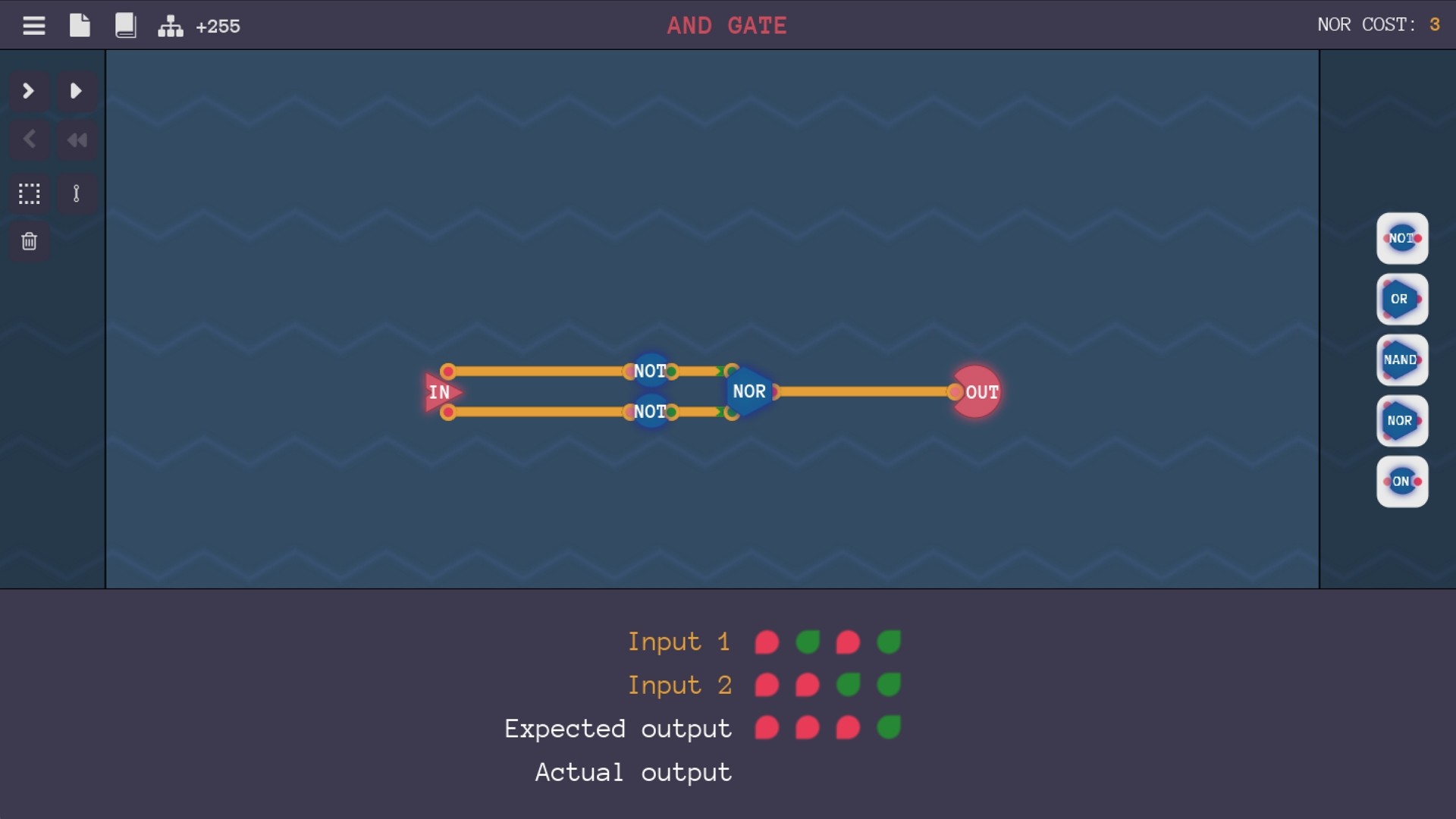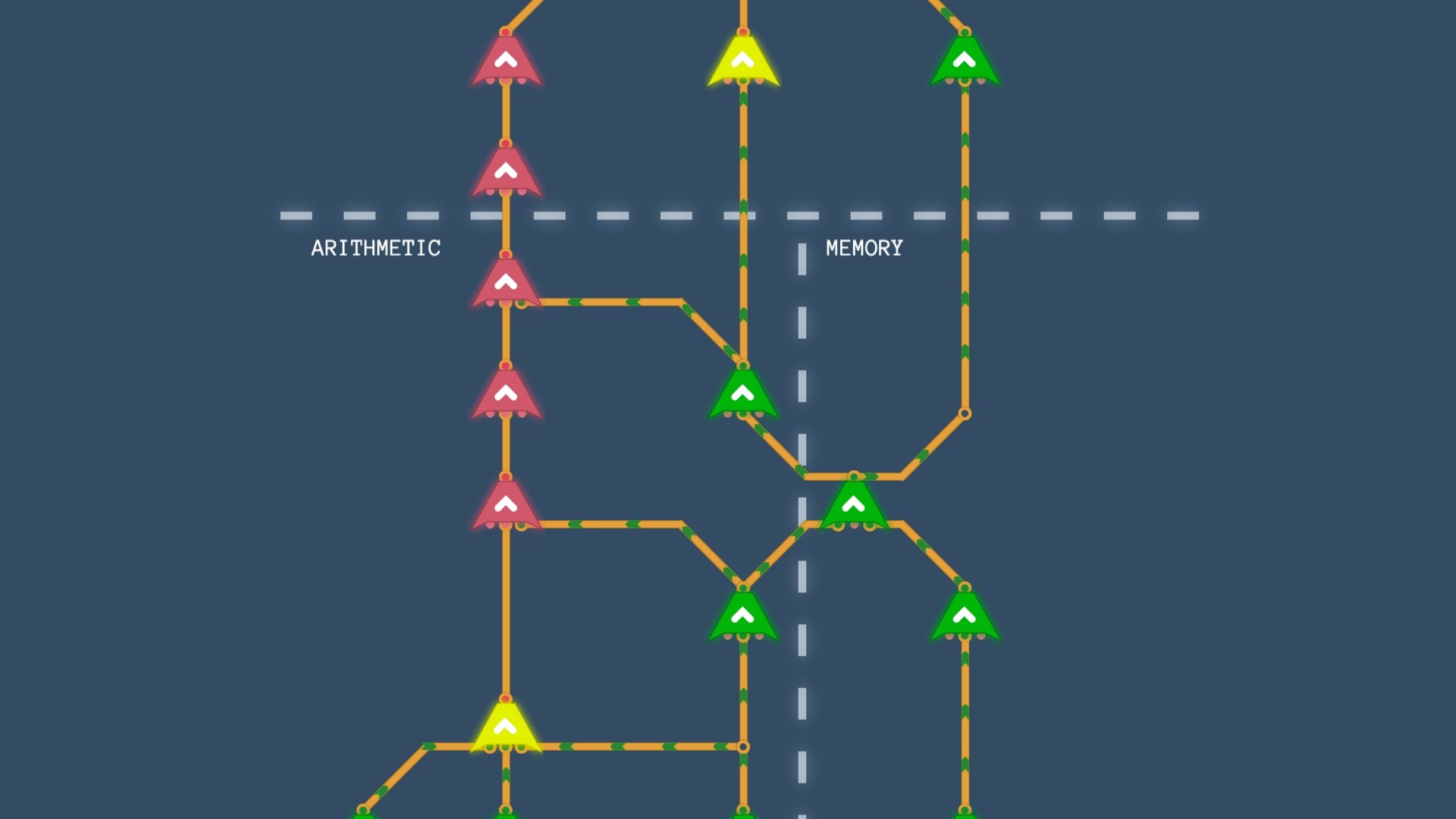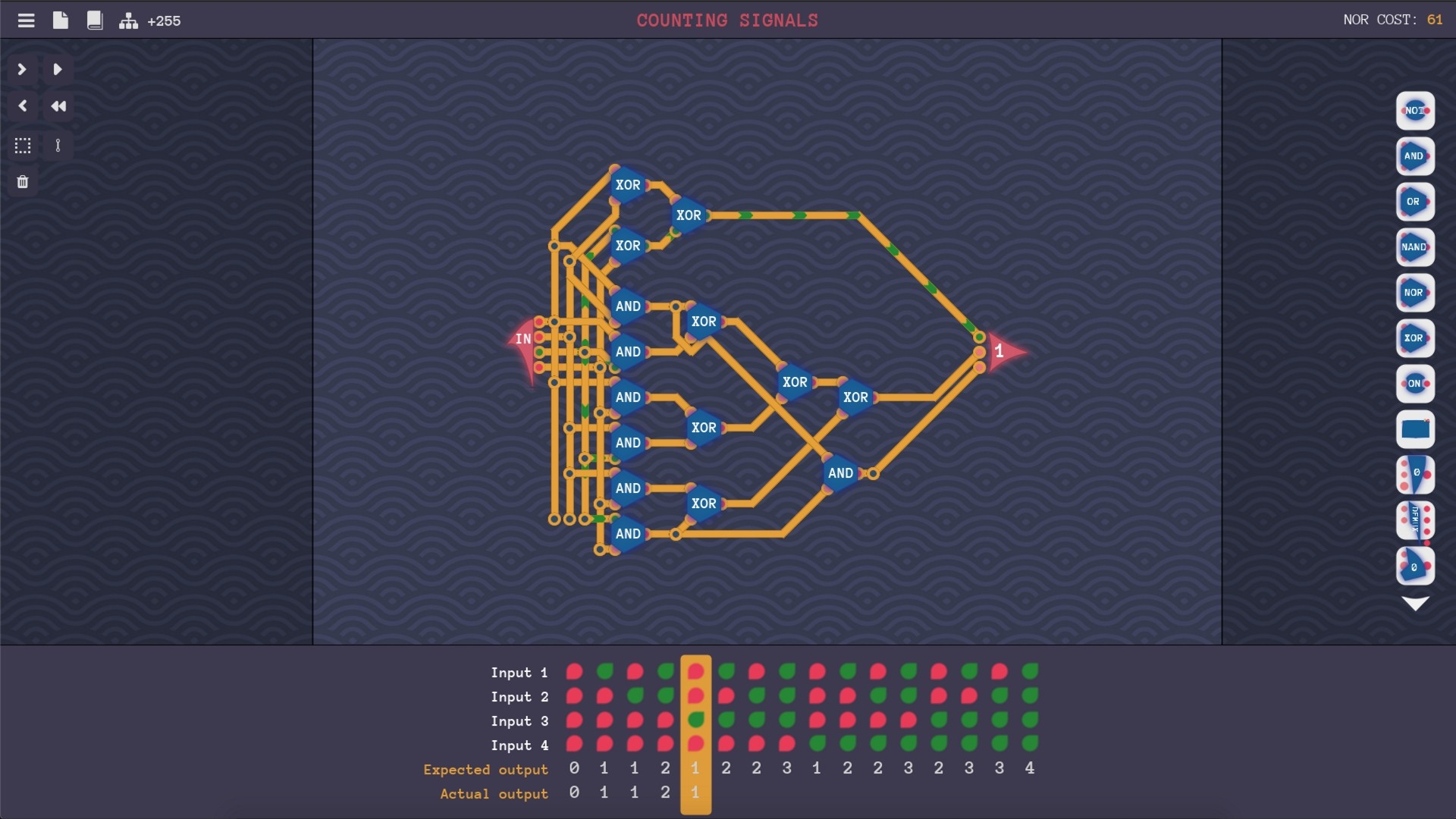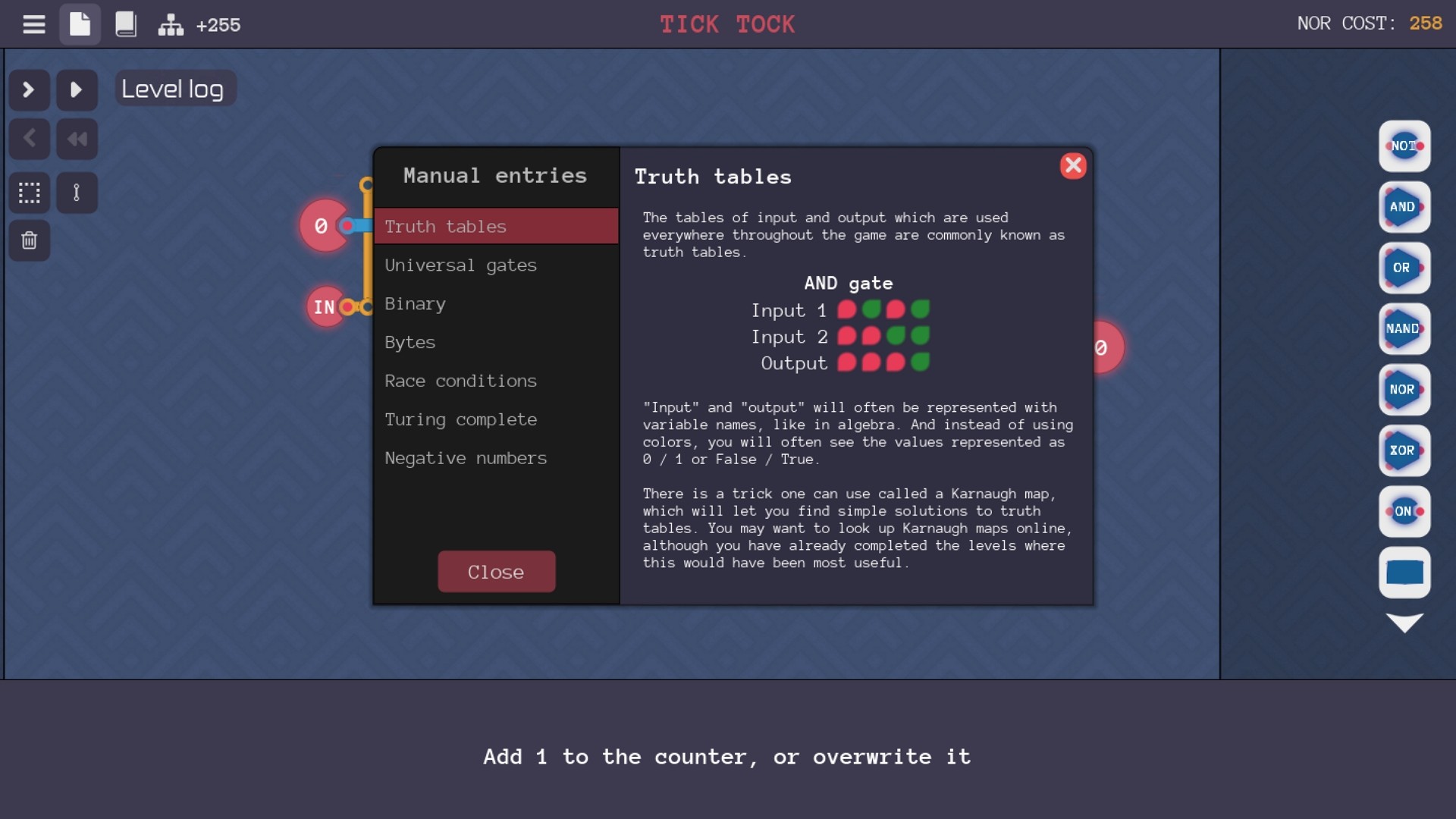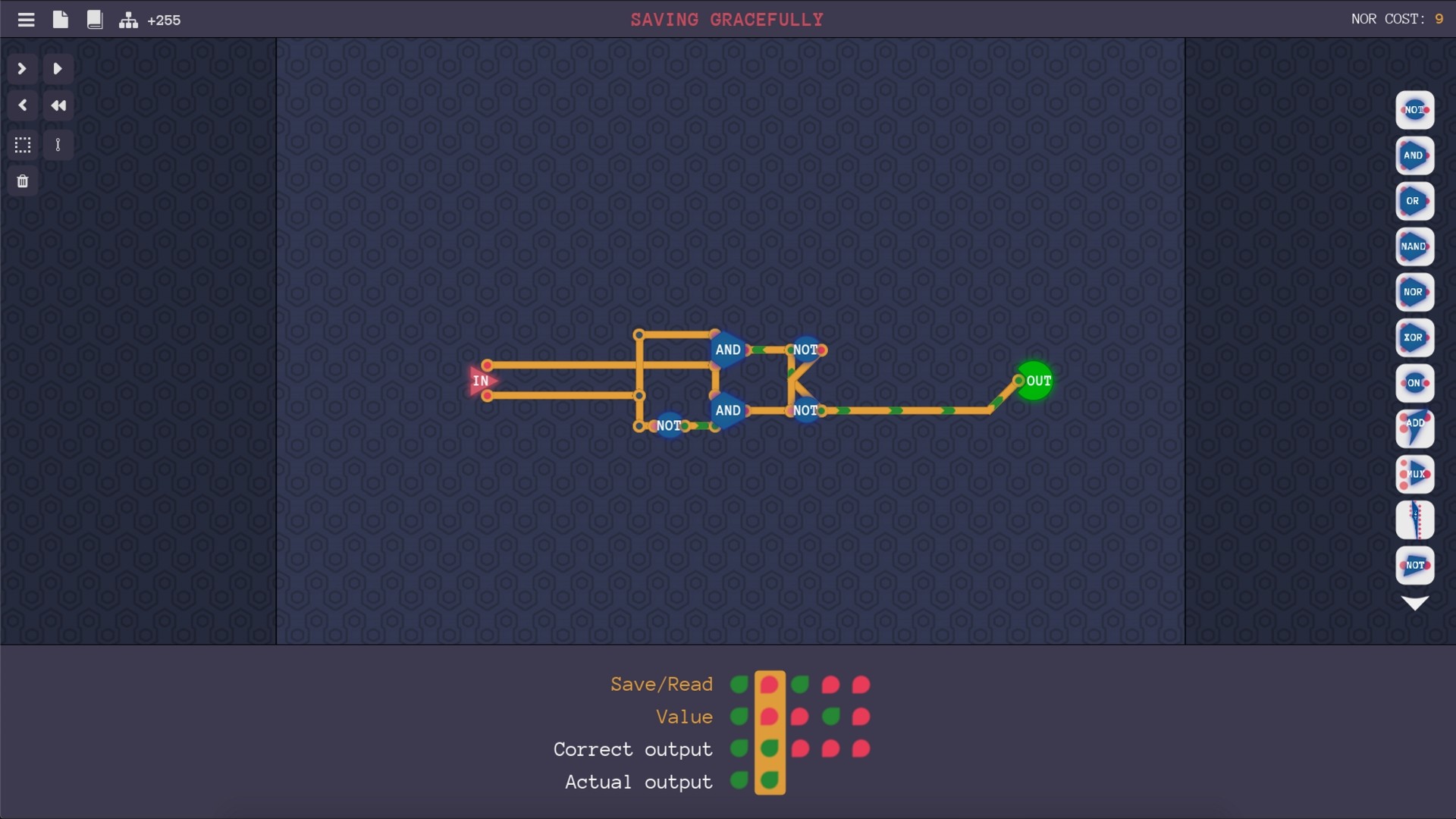
LEARN how the computer works on the most fundamental level
EXPLORE interesting puzzles and a quirky storyline
In this puzzle game, you build a computer from scratch and program it. It is a journey through the layers of abstractions of the computer. The game begins when you are abducted by aliens who are testing your intelligence, and from here a lighthearted sci-fi plot evolves.
This is the perfect game for those who want to to understand how the computer works, those who love programming and those that enjoy challenging puzzles.
For a while now I have been working on removing some of the common critiques people had regarding the realism of the game. The main changes have been requiring components to be powered, adding latches and the change you can watch explained in this video.
It is in a video format, because I wanted to explain the changes thoroughly and I fear the blog post would have been too long.
Because I wanted to announce this large change properly and not have players guess it ahead of time, I wasn't able to really let players know I was working towards this goal of realism and why. But since the cat is now out of the bag, I am excited to once again be able to share the short term roadmap for the game.
With this change, the realism modifications I wanted to make are pretty much done (there may or may not be an option for having an explicit clock at some point, but this would not affect scoring and might be better suited for user generated levels). The next goal is to finally implement in-game sharing. I imagine 3 types of sharing.
1. Architectures: These would be fully fledged machines you can download to your own computer. I imagine this being useful for fantasy game consoles, real world architectures or community architectures. Other players will then be able to share programs for each architecture. So user A can make a game for the fantasy console of user B and so on.
2. Demos: Read only schematics for neat stand alone programs, like the game of life, a mandelbrot explorer or games.
3. Custom components: A way to share custom components or packs of custom components.
All this would take place through in-game UI and there would be upvotes / downvotes and comments. The magic internet points earned by player uploads will be visible on their profile (but you can't get downvoted below 0, so no need to worry about losing points).
In order to get this far though, there is a bunch of stuff I want to do first.
First of all, I want to tie up some loose ends. I need to actually implement the change mentioned in the above video, then fix a bunch of small UI glitches and quality of life issues and I want to finish translation support.
Secondly, I want to get to a stable point in terms of the basic components supported in the game. My opinions of many of these things have stabilized I think and I would like to make an honest attempt at never having to break things that have been committed to the sharing platform. So first I will add a lot of missing sandbox components, like more kinds of RAM, displays, networking and sound. The way the players should interact with these things will take some time to settle, so I will prioritize adding this first. I used to think that I should give players as much power as possible, but my opinion has been refined a bit. Providing players with finished building blocks for everything is like giving players the most powerful weapons in a first person shooter game. It makes them feel powerful but removes a lot of gameplay and fun. Instead I should provide players low level control of the IO of their computer, so they can build anything they want. I also want to have just one easy to understand way to do things and it is OK if it means it takes a bit of work to do common things, as long as it is not extremely tedious. This is also why the Random component was removed.
While we experiment with the sandbox components and give their interface some time to settle, I will add 16 and 32 bit variants of the 64 bit components. I like simplicity and you can use the 64 bit components for 16 or 32 bit operations, by simply ignoring the high bits (for all components except signed less). Further there is a neat symmetry of the byte maker taking 8 bits to produce a byte, while the 64 bit maker takes 8 bytes. However, actually watching a stream of someone building a 16 bit computer it became clear that it is a bit awkward and it just doesn't feel right. I cant see myself ever supporting odd bit widths, since for speed I want all components to map to a single x86 or ARM instruction as much as possible. If you want to build a 107 bit computer, you can still do it, but simple schematics should reduce to simple machine code and if you are doing something complicated, it should be obvious from your schematic.
To support all these new components I will also have to upgrade the component menu, so it doesn't become completely cluttered.
Finally I want to mention that I had originally planned to bring back the old architecture scoring "perf score" system around this time, but thinking about it more, saving this effort in order to get to user generated levels faster is the better plan. User levels is the most important missing feature (although it will take much work) and users will likely create a better architecture scoring systems than I could.
Minimum Setup
- OS: 64 bit
- Processor: I5Memory: 1 GB RAM
- Memory: 1 GB RAM
- Graphics: Intel UHD 630
- Storage: 512 MB available space
[ 6448 ]
[ 4329 ]
[ 5362 ]

